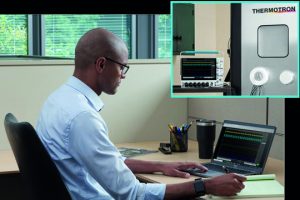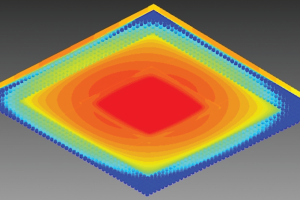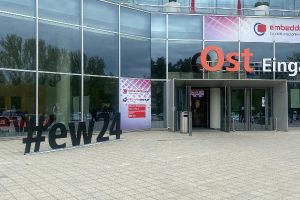 With engineers frequently around hazardous equipment such as dynamometers, any measures to remove personnel from risk are welcome. Meanwhile, the skills shortage in engineering continues to bite. Retaining experience and knowledge while training a new generation is a challenge across almost all engineering disciplines. It is also forcing personnel to harness technology to find new and innovative ways to achieve more with less.
With engineers frequently around hazardous equipment such as dynamometers, any measures to remove personnel from risk are welcome. Meanwhile, the skills shortage in engineering continues to bite. Retaining experience and knowledge while training a new generation is a challenge across almost all engineering disciplines. It is also forcing personnel to harness technology to find new and innovative ways to achieve more with less.
Automation is increasingly seen as the answer, however this presents new challenges to consider, particularly in the usage of critical equipment such as oscilloscopes. Solutions are increasingly entering the market that can harness the benefits of automation and remote testing without compromising on efficiency and accuracy.
Benefits of remote operation
There are several scenarios in which an engineer may want to access an oscilloscope remotely. Remote access and control can allow an engineer to duplicate the front panel of a scope on a remote PC, whether this is a home PC, or from halfway across the world. It can also be used to foster collaboration, allowing team members to work together without having to be in the same room, or even the same time zone.
Another scenario combines remote access with offline analysis. Here, the engineer can control the scope, get data from it via a direct connection or USB, and then perform measurements and analysis after having disconnected from the scope. Ease of use is vital in these circumstances, using familiar interfaces based on widely used platforms and requiring little in the way of additional skills and training. Fast, reliable communication with the instrument is vital in any remote working scenario.
Remote access can also be leveraged to facilitate automated testing. This is where the scope is programmed to handle its own setups, data transfers and data analysis. While any programming language can feasibly be used, Python is today’s most commonly used language for this application. With Python’s community of developers behind it, and extensive package libraries, it is used by beginner and veteran programmers. Once the programming is done the program handles setups, data transfers and data analysis (such as pass/fail).
Typical use cases
One of the two main use cases for automation involves using routines that mimic human behaviour to automate the front panel and save time, for example, offering automated validation. An engineer can develop a script to automatically take measurements and display the results. This removes the need to be physically present at the scope to take the appropriate measurements and writing down the results of the tests on each new part.
The other main use case employs the extended functionality of the instrument, for example measurement logging, validation, or quality assurance. Automation allows the engineer to execute complex tests without the need for an operator to set up the scope or manually record the results. An added advantage is that the tests can be performed in the same way every time.
Remote scenarios
* Web browser remote control
Remote control of an oscilloscope may be achieved using a built-in web server. This presents a real-time display and interface that runs on a web browser as if the user were at the instrument with a mouse and keyboard. Anyone with the IP address and access to the local area network (LAN) can simultaneously access and control the oscilloscope.
The web browser may run on a computer, smartphone, or other device, while the network connection can be achieved directly using an Ethernet cable, a LAN connection with a network switch or router, or over a VPN.
* Remote waveform analysis
PC-based analysis software allows engineers to collaborate without the need to physically share an oscilloscope. This allows individuals to work in ways that suit them. For example, one engineer can take data in a lab and send it to several other engineers, allowing them to make their own independent measurements.
It also allows an engineer to spend, for example, a day in an instrumentation lab to collect a large set of data, while the rest of the time is spent at their desk or out-of-office doing analysis.
* Programming automation
Engineers across many industries use automation to extend the capabilities of test instruments. Python is a free programming language that offers many advantages for automation; it is easy to teach and learn, with a very readable code. It also has widely available knowledge bases and modules.
Custom automation programs communicate to oscilloscopes over the instrument’s programmatic interface (PI), which defines a set of commands and queries. For many, these commands are based on the standard commands for programmable instrumentation format. The PI commands are often sent through a virtual instrument software architecture (VISA) layer. The VISA allows the same reads, writes and error checking to be performed regardless of whether the physical interface is USB, Ethernet, RS-232 or GPIB.
Package drivers that blend the PI and Python facilitate development of instrument automation. When used with an integrated development environment customers are able to write automation in Python natively and have the automation documentation. Open source packages extend support to more instruments, or change to fit customers’ environments.
Using remote control, remote analysis and automation simplifies and accelerates the development of new electronic systems and devices. As customers demand more products more quickly, cutting their time to market helps manufacturers to become innovators and disruptors rather than simply following trends.
Visit Tektronix at Embedded World – Hall 4-314
 Electronics Weekly Electronics Design & Components Tech News
Electronics Weekly Electronics Design & Components Tech News



